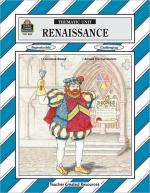|
This section contains 1,369 words (approx. 5 pages at 300 words per page) |

|
Studying the Body. Renaissance artists had little personal freedom in how they depicted the divine body, especially that of Christ. Pictorial tradition emphasized the need to demonstrate both the divine and human aspects of Christ's nature. Techniques that stressed Christ's smooth and serene forehead, upstanding carriage, and dignified demeanor influenced pictorial conventions of other religious figures. As artists mastered naturalistic canons, they ran the risk of creating religious images that awakened problematic emotions in the viewer. For example, the image of St. Sebastian, located in San Marco in Florence, was removed because of reports that the comely, seminude image had provoked women to sexual fantasies. Renaissance artists also glorified the human body and strove to master the perfection of form. Inspired by the canons of proportion, based on classical antiquity, they created idealized figures whose proportions and measurements internalized order and in...
|
This section contains 1,369 words (approx. 5 pages at 300 words per page) |

|




